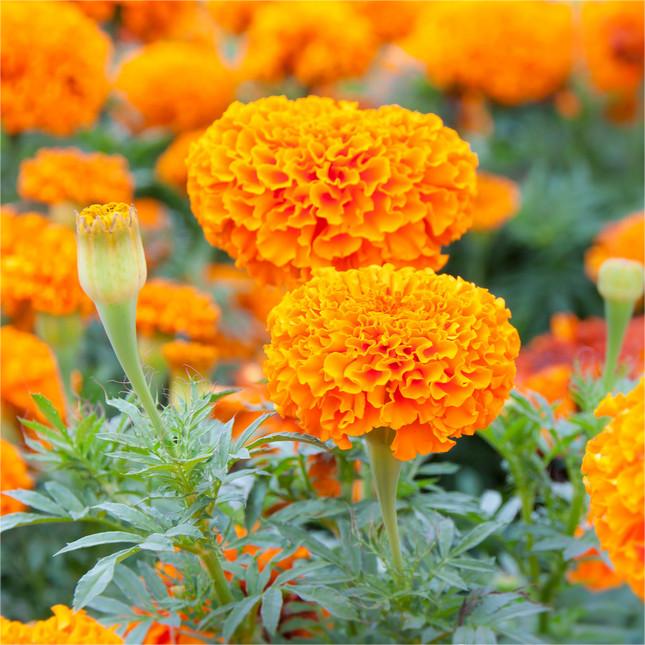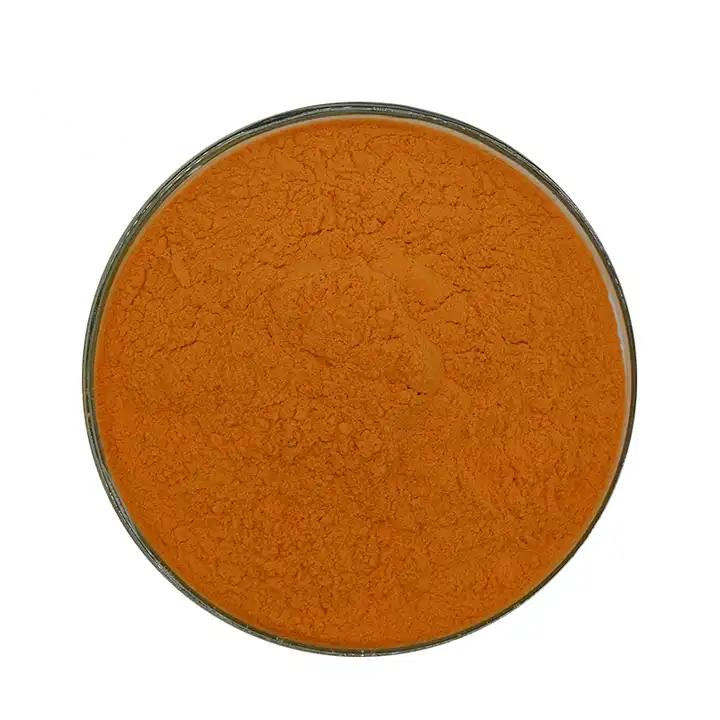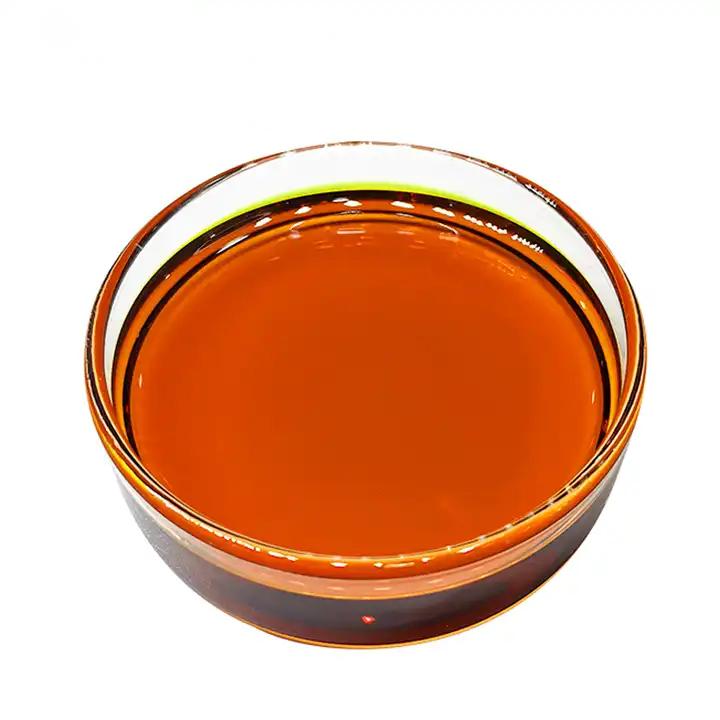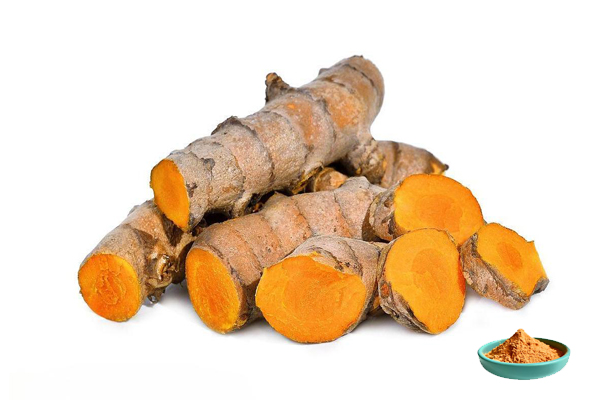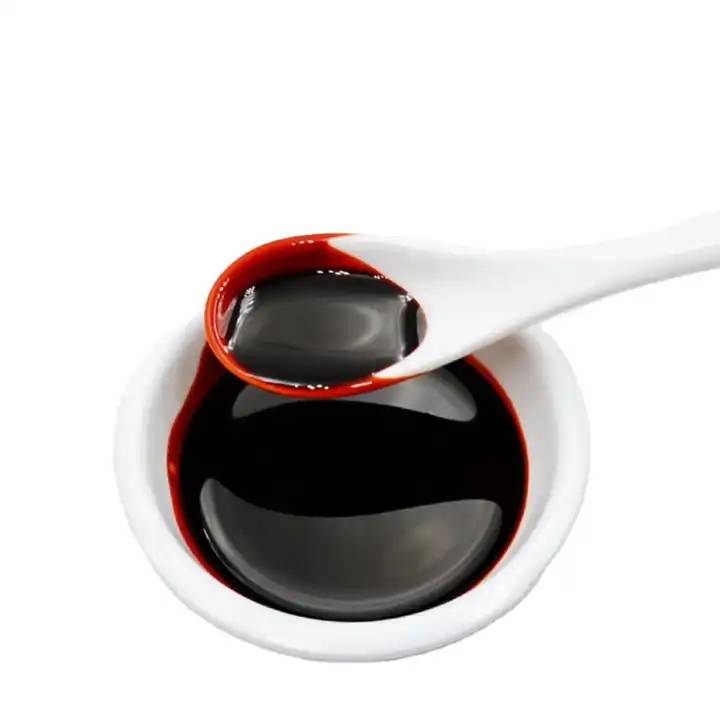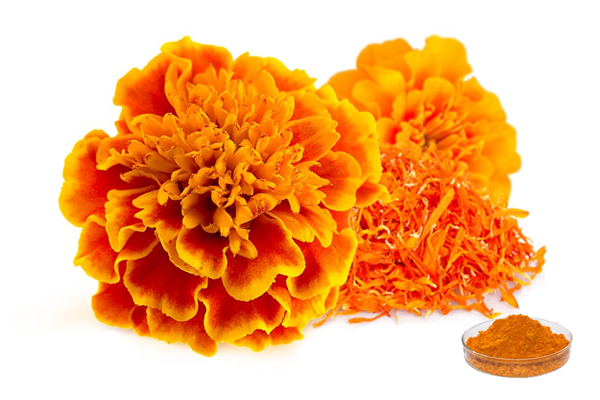Grado alimenticio 20% de polvo de luteína Dispersible en agua
Nombre del producto: polvo de luteína
Fuente de la planta: flor caléndula
CAS No. 127-40-2
Ensayo: 20%
Método de ensayo :HPLC
Aspecto: polvo fino de color naranja
Residuos de plaguicidas: cumplir con la norma (CE) n º 396/2005
- descripción
- Hoja de datos
- Certificado de certificado
-
¿Qué es la luteína en polvo?
La luteína pertenece a los carotenoides, ampliamente presentes en verduras, frutas, flores y otros organismos en los pigmentos naturales, especialmente en las caléndulas en su mayor contenido, que es de color naranja-rojo o naranja-amarillo, los principales componentes de la luteína y la zeaxantina. La luteína tiene una fórmula molecular de C40H56O2 y una masa molecular relativa de 568,87.
Polvo de luteínaEs un polvo amarillo anaranjado con un olor a heno débil, insoluble en agua, soluble en propanol, metan, isopropanol y dicloroetano, y tiene buena resistencia al calor. La luteína está ampliamente presente en las verduras verdes. Entre ellas, la caléndula tiene el mayor contenido de luteína. De acuerdo con las disposiciones de la norma nacional de seguridad alimentaria GB 26405-2011 para el aditivo alimentario luteína, el aditivo alimentario luteína proviene de calocalda.
Green Spring Technology supplies Polvo de luteína in the form of extract, microcapsule powder, oil suspension, and other forms and specifications. Lutein Powder adopts encapsulation treatment to make it isolated from the air, which has a certain inhibiting effect on discoloration and oxidation, and it can be used in functional food and health care products.
Todos los productos suministrpor Green Spring Technology implementan los m ã ¡S altos est ã ¡Ndares internacionales de la industria, cumpliendo con los est ã ¡Ndares de la UE EC396, EU 2023/915, y los m ã ¡S altos est ã ¡Ndares de residuos de disolventes. Tenemos un sistema de gestión de calidad sistemática y organizar la producción en estricto acuerdo con ISO, HACCP, y otras normas de calidad. Hemos aprobado Halal, Kosher, COSMOS, BRC, IFS, FDA, ISO, y muchas otras certificaciones. Con nuestro excelente equipo de i + d, equipo de producción con experiencia y equipo de ventas profesional, podemos personalizar varios extractos estándar, así como extractos proporcionales.
Especificaciones:
Nombre del producto
Lutein Powder
Nombre latino
Tagetes erecl.
CAS No.
127-40-2
fuente
Flores de flores de flores
especificación
20%
Método de ensayo
HPLC
apariencia
Polvo fino de naranja
Residuos de plaguicidas
Cumplir con la norma (CE) n º 396/2005
Reglamento:
Se ajusta a la normativa de la UE.
Learn More About Our One-Stop Solution for Natural Lutein Ingredient.
¿Busca un presupuesto?Benefits:
Improvement of Vision
Lutein is a major carotenoid that maintains visual function and specifically accumulates in the retina and lens. Dietary lutein/zeaxanthin and its metabolite endo-zeaxanthin account for 25% of the total cucurbitacins in the retinal macula of healthy eyes. As a strong antioxidant, lutein quenches monoclinic oxygen and forms an effective blue light filter inside the retina of the human eye, minimizing oxidative damage caused by blue light. Thus, it protects the optic rod and cone cells and effectively prevents and improves macular degeneration and cataracts caused by bright light exposure. Appropriate supplementation can elevate the level of lutein in human plasma, increase macular pigment density (MPOD), and effectively prevent early retinal lesions.
Filtering Blue Light
External light consists of different wavelengths of light, the shorter the wavelength the higher the energy. If the intensity of light and the duration of light exposure exceeds the retina's tolerance, it can cause damage to the retina. Blue light, with its relatively high energy, increases the number of free radicals in the macula of the retina, which in turn increases the amount of metabolic waste in the macula, causing more damage to the retina.
Lutein is yellow because its molecular structure absorbs and filters blue-violet light and reflects yellow light, a feature that protects retinal cells. Especially when the eye receives too much blue light and near-ultraviolet light, lutein can absorb these rays, like a layer of blue light "filter" on the retina. It protects the macula and retina by preventing damaging blue-violet light from acting directly on retinal cells.
Antioxidant
As a class of tetraterpenoids, lutein is rich in conjugated double bonds and has a strong scavenging ability of free radicals, which can effectively prevent the damage of oxygen radicals to cells. Some scholars used chemiluminescence to study and analyze the scavenging effects of marigold luteolin on peroxides, superoxide anions, hydroxyl radicals, and lipid radicals. The results found that luteolin has a strong scavenging effect on the above free radicals.
The synergistic antioxidant activity of two carotenoids, lutein and zeaxanthin, was investigated using a combination of in vitro antioxidant-based and in vivo antioxidant methods based on the in vivo ethanol oxidative damage model in mice. The synergistic antioxidant activity of lutein and zeaxanthin was found to be better when the ratio of lutein to zeaxanthin was 1:2. In the study of the relationship between lutein and brain ω-3 polyunsaturated fatty acid (PUFA) oxidation, it was found that mitochondrial lutein was negatively correlated with docosahexaenoic acid (DHA) oxidation products. The accumulation of subcellular lutein and its relationship with DHA oxidation in the primate brain was also investigated, suggesting that lutein may be related to antioxidant function in the brain.
Applications:
In the Food Field:
Lutein has a good colouring effect, it has a bright yellow colour, insoluble in water, soluble in oil, and ethanol, and resistant to light, heat, acid and alkali. Lutein powder is widely used in pastry, confectionery, beverages, rice and noodle products as a colouring agent. Lutein is used as a colouring agent in beverages and jellies. Orange juice beverages, milk beverages and carbonated beverages are added with lutein, and the retention of lutein is more than 90% after 6 months of storage.
For Health Products:
Lutein is one of the carotenoids, and relevant studies have proved that it has a clear effect on preventing age-related macular degeneration and other eye diseases. In 1995, the U.S. Food and Drug Administration (FDA) reviewed the utility and safety of lutein and approved its use as a food supplement. In 2008, China listed lutein from marigolds in the catalog of new resource foods, and now marigold extract lutein powder is widely used as a raw material for health food and dietary supplements.
For Feed Product:
Feed grade lutein powder can be applied for color enhancement of poultry skin, fat, shins, and egg yolks, as well as for trout, salmon, snapper and shrimp, and crab. The deposition pattern of lutein in chicken feed in the egg yolk has an impact on production performance, giving a bright yellow color to egg yolks, chicken skin, and chicken fat.
-
descargar
Polvo de luteína a granel 20% COA


 inglés
inglés francés
francés español
español ruso
ruso coreano
coreano Japonés japonés
Japonés japonés



